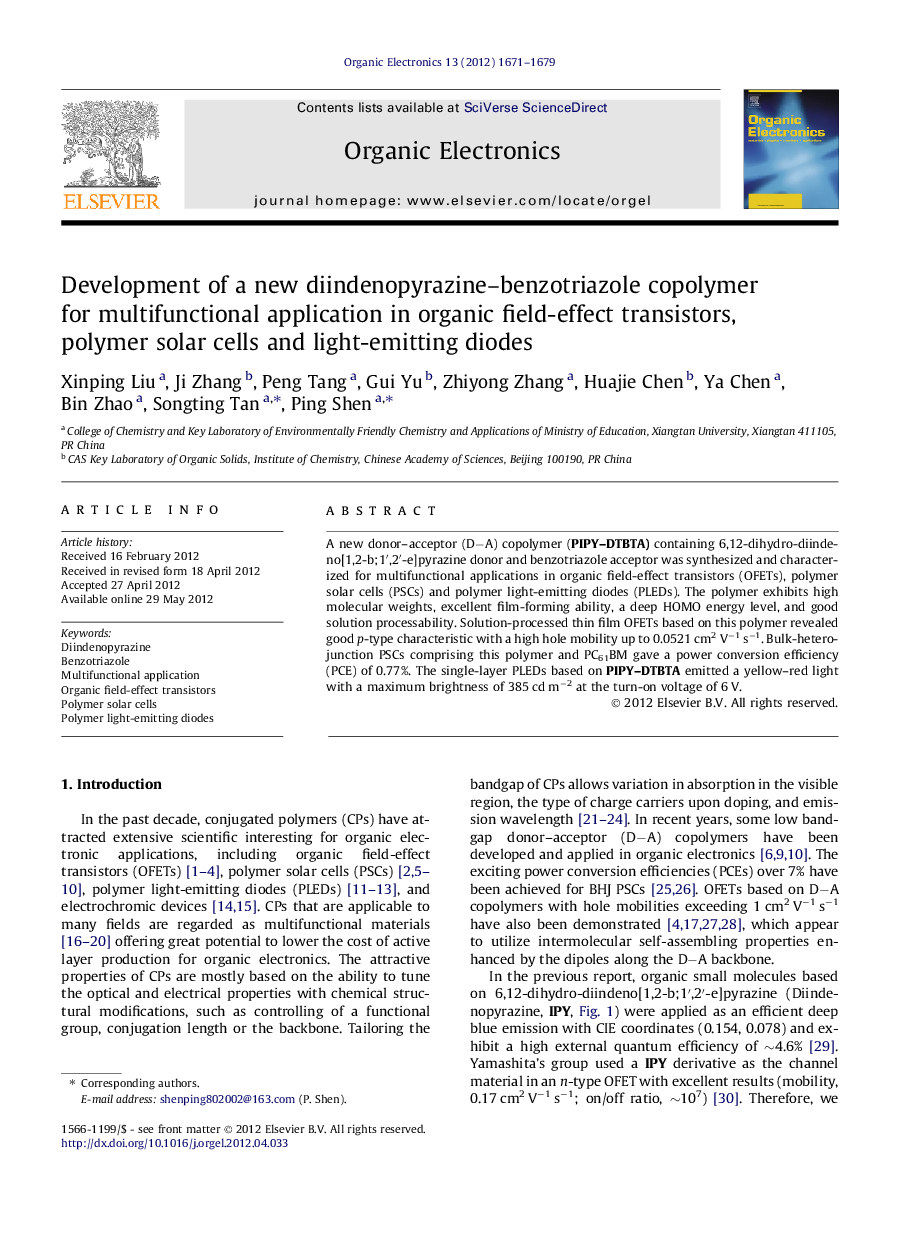| Article ID | Journal | Published Year | Pages | File Type |
|---|---|---|---|---|
| 1264568 | Organic Electronics | 2012 | 9 Pages |
A new donor–acceptor (D−A) copolymer (PIPY–DTBTA) containing 6,12-dihydro-diindeno[1,2-b;1′,2′-e]pyrazine donor and benzotriazole acceptor was synthesized and characterized for multifunctional applications in organic field-effect transistors (OFETs), polymer solar cells (PSCs) and polymer light-emitting diodes (PLEDs). The polymer exhibits high molecular weights, excellent film-forming ability, a deep HOMO energy level, and good solution processability. Solution-processed thin film OFETs based on this polymer revealed good p-type characteristic with a high hole mobility up to 0.0521 cm2 V−1 s−1. Bulk-heterojunction PSCs comprising this polymer and PC61BM gave a power conversion efficiency (PCE) of 0.77%. The single-layer PLEDs based on PIPY–DTBTA emitted a yellow–red light with a maximum brightness of 385 cd m−2 at the turn-on voltage of 6 V.
Graphical abstractFigure optionsDownload full-size imageDownload as PowerPoint slideHighlights► A new D–A polymer PIPY–DTBTA was synthesized for multifunctional organic electronics. ► The polymer exhibits high molecular weight, excellent film-forming ability and a deep HOMO energy level. ► The OTFT devices exhibited impressive performance with a hole mobility up to 0.0521 cm2 V−1 s−1. ► The preliminary performance of PSCs and PLEDs based on PIPY–DTBTA were also investigated.
